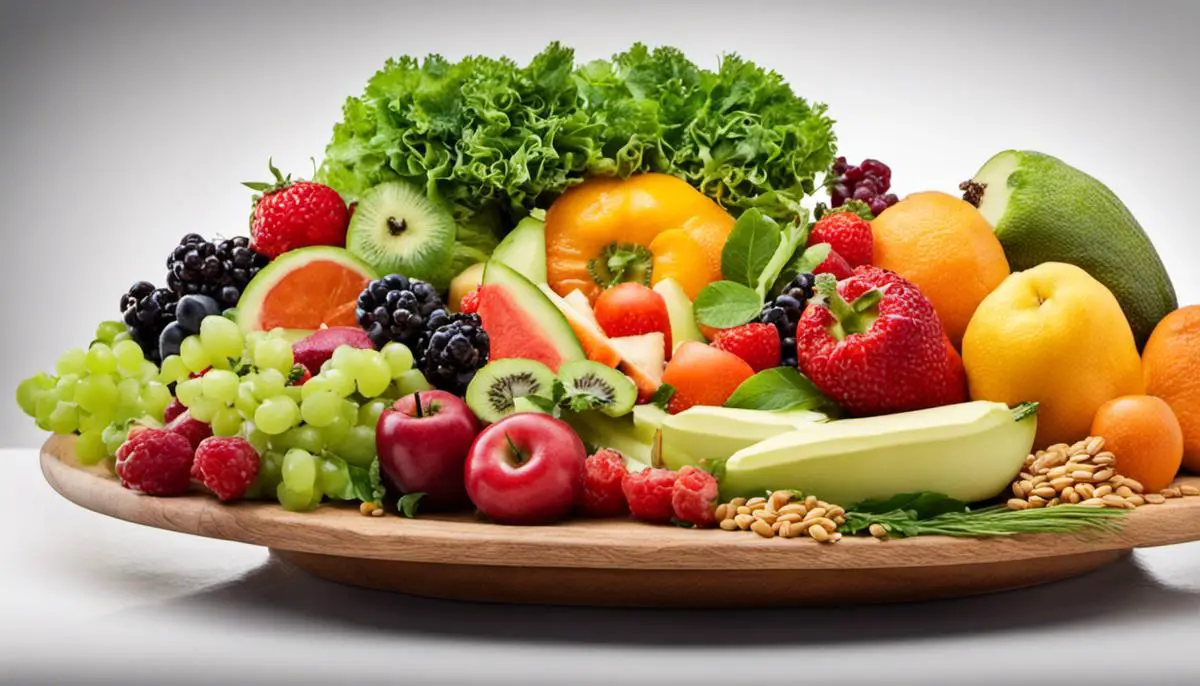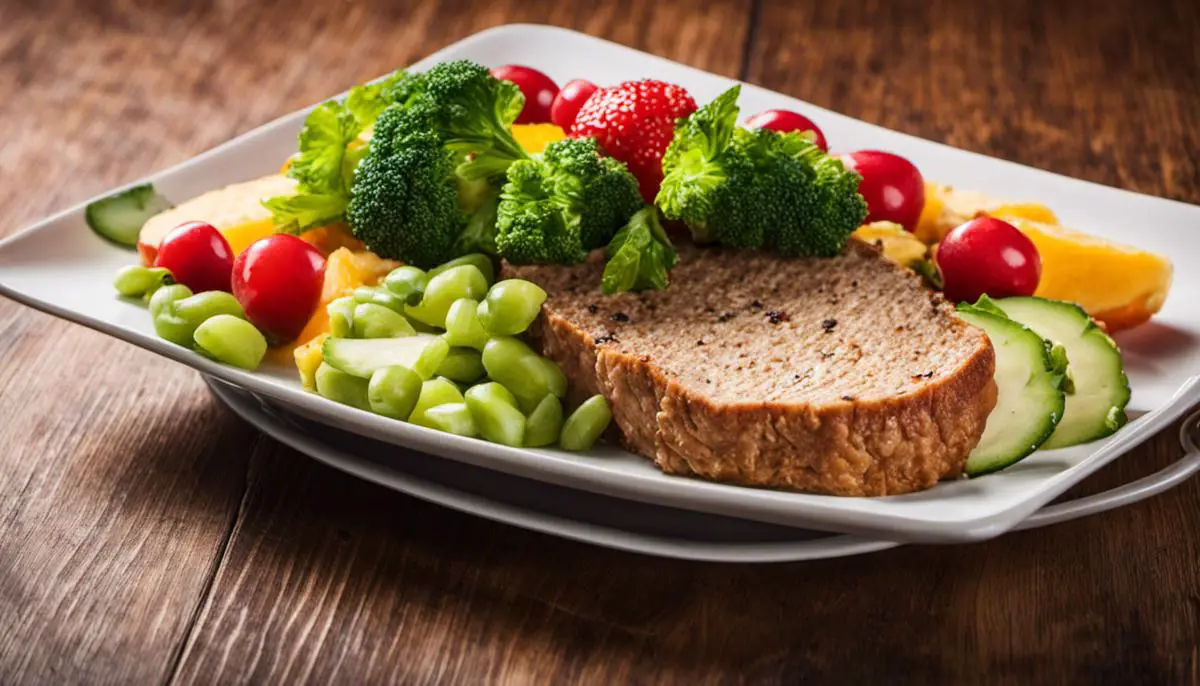Living with diabetes doesn’t necessarily mean having to give up on flavorful, delightful meals, especially the most important meal of the day: breakfast. A diabetic-friendly diet, once understood properly, can become an enjoyable lifestyle journey. The key lies in wisely balancing carbohydrates, proteins, and fats, not just to keep blood sugar levels in check, but to improve overall health and well-being. Setting oneself free from the clutches of processed, high-sugar, and unhealthy fatty foods is a significant step towards this goal. Embracing low glycemic index food and portion control can do wonders in creating much-needed equilibrium. By understanding different nutritional benefits from a variety of food ingredients you can create delicious homemade diabetic breakfasts.
Understanding a Diabetic-Friendly Diet
Understanding Diabetic-Friendly Diet
A diabetic-friendly diet is one that helps manage and regulate blood sugar levels. This doesn’t mean you have to exclude all sugars and carbs from your meal; rather, it’s about choosing the right types and balancing them correctly. A well-regulated diet, comprising appropriate portions of carbohydrates, proteins, and fats can help manage your diabetes better. Keeping a check on your diet not only helps control blood sugar levels but may also improve overall health.
Balancing Carbohydrates, Proteins, and Fats
A key aspect of a diabetic-friendly diet is the balance between carbohydrates, proteins, and fats. Each of these food groups impacts your body differently:
- Proteins are essential for tissue repair and are mostly neutral when it comes to blood sugar levels.
- Carbohydrates, especially complex carbs, provide energy but can raise blood glucose levels. Therefore, they must be appropriately portioned.
- Fats are important for overall health but in moderation, as excessive intake, especially of saturated fats can lead to weight gain and cardiovascular problems. Therefore, the diabetic diet should aim at striking an optimal balance between these nutrients.
Low Glycemic Index Foods and Blood Sugar Regulation
The Glycemic Index (GI) is a rating system that indicates the impact of carbohydrates on blood sugar levels. Foods with a low GI cause slower, more manageable increases in blood sugar levels. Therefore, they are preferable for people who have diabetes. Examples of low GI foods include oatmeal, sweet potatoes, most fruits, and non-starchy vegetables.
Portion Control: Essential for Diabetic Diets
Portion control is an important aspect of a diabetic-friendly diet. Regardless of the food’s health benefits, excessive consumption can negatively affect blood sugar levels and weight, both of which are critical for individuals with diabetes. Tools like measuring cups, food scales, or even your own hand can help estimate proper serving sizes.
Avoiding Processed Foods High in Sugar and Unhealthy Fats
Processed foods that are high in sugar or unhealthy fats can create a spike in blood sugar levels, leading to long-term health complications. Highly processed foods, sugary drinks, and snacks are typically loaded with unhealthy fats and added sugars. Therefore, switching to home-cooked meals, choosing whole grains, lean proteins, healthy fats, and lots of fresh fruits and vegetables can be beneficial.
In conclusion, crafting a diabetic-friendly diet is about making smart choices – selecting foods with low GI, practicing portion control, and avoiding high-sugar or processed foods. Remember, you can always consult a dietitian to help design a diet tailored to your individual health needs.

Healthful Breakfast Ingredients for Diabetic Diet
Understanding Nutritional Benefits of Food for Diabetic Breakfast
Eating a balanced diet is crucial for people living with diabetes. The foods you consume have a direct impact on blood glucose levels, especially at breakfast. Understanding the nutritional benefits of different ingredients allows you to make choices conducive to managing diabetes.
Whole grains are an excellent source of fiber that keeps you feeling full and helps regulate blood sugar levels. Whole grain foods such as oatmeal and brown rice have a low glycemic index, meaning they are digested slowly and cause a slower and lower rise in blood glucose levels.
Fruits are a nutritious food group packed with vitamins, minerals, and fiber. However, the carbohydrate content in fruits can raise blood glucose levels, so portion control is key. Berries, cherries, peaches, apricots, apples, and oranges have lower glycemic indexes and are beneficial for a diabetic diet.
Benefits of Vegetables, Lean Meats, and Dairy
Vegetables, particularly non-starchy ones like leafy greens, broccoli, and peppers, are low in carbs and high in fiber — making them ideal for blood sugar control. They are also packed with beneficial antioxidants and essential nutrients like potassium and Vitamin C, which promote overall health.
Lean meats are a great source of protein and have very little impact on blood sugar levels making them a great choice. Chicken, turkey, and fish are all excellent lean protein sources. It’s best to utilize healthy cooking methods like grilling, baking, or steaming to avoid excess fat and calories.
Low and non-fat dairy products are high in calcium and protein. Milk and yogurt are good choices, but it’s important to stick to unsweetened versions to avoid unnecessary sugar intake.
Incorporating Eggs and Healthy Fats into a Diabetic Breakfast
Eggs are an excellent source of protein and can help to keep blood sugar levels stable. They also provide other nutrients like Vitamin D and eye-healthy antioxidants. You can enjoy them boiled, poached, scrambled, or as an omelet with plenty of vegetables.
Healthy fats are crucial for body functioning and can help slow down the digestion and absorption of carbohydrates, reducing the spike in blood sugar after meals. Foods rich in healthy fats include avocados, olives, and nuts. Chia seeds and flaxseeds are also good choices as they are high in fiber and omega-3 fatty acids, which are good for heart health.
In conclusion
Creating a healthy homemade diabetic breakfast involves a balance of whole grains, fruits, vegetables, lean meats, dairy products, eggs, and healthy fats. Incorporating a variety of these nutrient-dense foods can help manage blood sugar levels, keep you satisfied, and promote overall health.

Photo by foodbymars on Unsplash
Creating Diabetic-Friendly Breakfast Recipes
Preparing a Healthy Diabetic Breakfast
Before you start cooking a healthy homemade diabetic breakfast, make sure your kitchen is stocked with your chosen ingredients. Lean proteins, fresh vegetables, whole grains, low-fat dairy and fresh fruits are perfect for a diabetes-friendly diet.
Making Oatmeal with Fruits and Nuts
A bowl of oatmeal can be filling and heart-healthy. To begin, boil 1 cup of water in a pot. Add 1/2 cup of steel cut oats into the boiling water. Reduce heat and let it simmer for about 20-30 minutes, until the oats soften. Make sure to stir occasionally to prevent the oats from sticking to the pot. When the oatmeal is cooked to desired consistency, remove from heat. Add a small amount of milk or almond milk to enhance texture and flavor, then sweeten it with a little bit of artificial sweetener, such as stevia. Add your favorite fruits, such as blueberries and diced apple, into the oatmeal after it cools a little. Sprinkle a small handful of nuts, like almonds or walnuts, to add healthy fat and protein.
Scrambling Eggs with Vegetables
Scrambled eggs with vegetables make a nutritious and filling breakfast. First, heat a non-stick frying pan on medium heat. Add a teaspoon of olive oil. While your pan is warming, whisk two eggs in a bowl. Stir in diced vegetables such as bell peppers, tomatoes, onions, and spinach. Pour the egg and vegetable mixture into the pan. Cook for a few minutes, stirring occasionally, until the eggs are firm but still moist. Season with a pinch of salt and pepper to taste.
Assembling Whole Grain Toast with Avocado
Whole grain toast with avocado is a nutritious, diabetes-friendly option that’s easy to prepare. Simply toast a slice of whole grain bread to your liking. While the bread is toasting, slice a ripe avocado in half. Remove the pit and scoop out the flesh. Mash the avocado with the back of a fork and spread onto the toasted bread. Sprinkle a dash of salt and pepper on top, and perhaps a dash of lime or lemon juice for added flavor. Optionally, you may also add sliced tomatoes or a sprinkle of sesame seeds for added texture and taste.
Remember, portion control is important to keep your blood sugar levels in check. Use measuring cups, spoons, and food scales to ensure correct serving sizes. It’s also important to monitor blood sugar levels before and after meals to understand how these dishes affect you. Enjoy your healthy, homemade diabetic-friendly breakfast options!

Transforming know-how into daily practice is the most rewarding part. Once you comprehend the nutritional landscape of components like whole grains, fruits, vegetables, eggs, lean meats, and selected dairy products, it becomes inspiring to explore the multiple culinary trajectories these ingredients offer. Creating diabetic-friendly breakfast recipes can be fun and healthy at the same time. From a bowl of oatmeal adorned with fruits and nuts to scrambled eggs with a melee of vegetables or a slice of whole grain toast spread with avocado, the options are plentiful, and the choice is yours. Here’s to a healthier, happier, delicious tomorrow!
